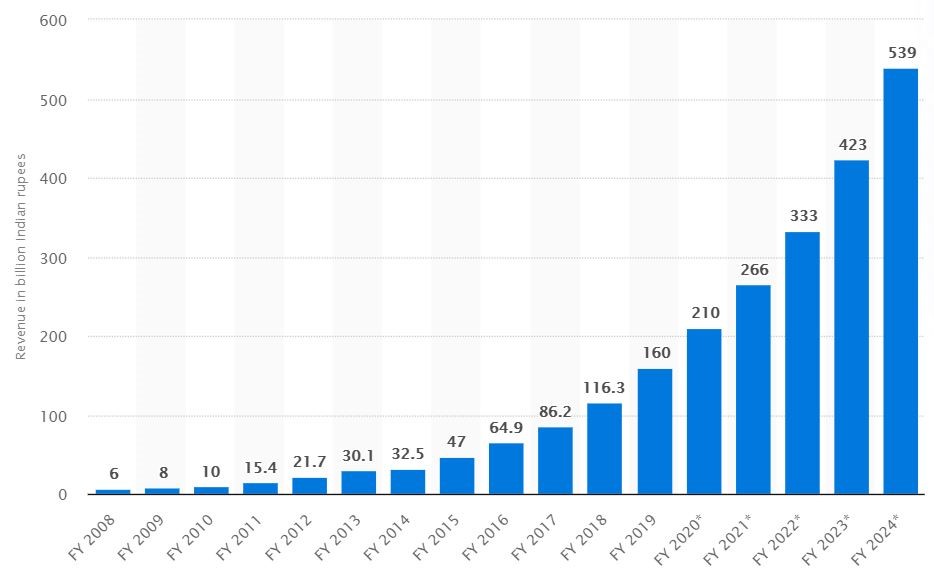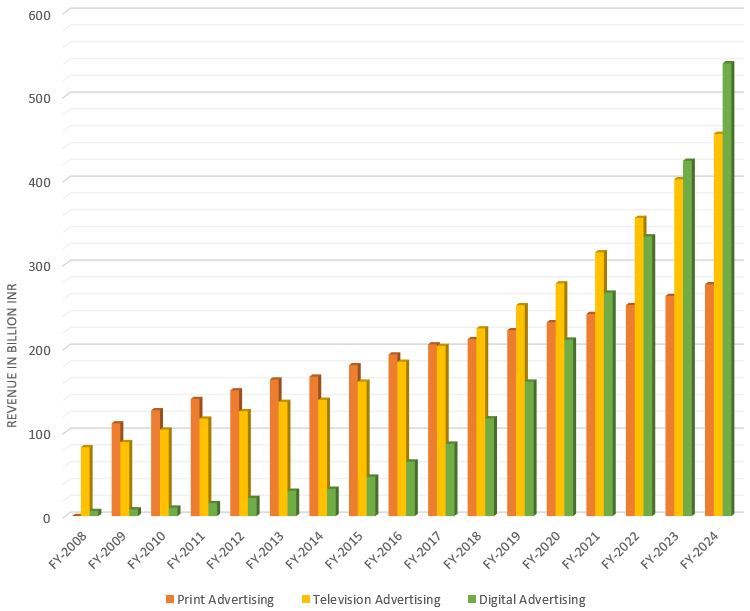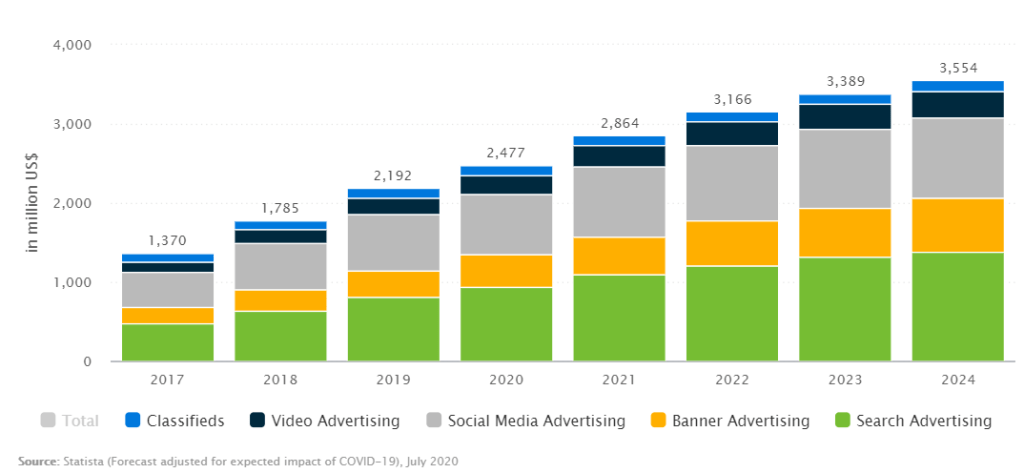
In our previous piece, we focused on the features of markets in the digital world. Particularly, we tried to explain how markets in the digital world show propensity for benefitting from very high returns to scale and network externalities which went hand-in-hand with the rise in provision of free services. In continuation of the trend on interaction between the Digital Economy and competition law, in this piece, we attempt to lay down the importance of ensuring best practices in the digital advertising market, which is increasingly becoming the preferred channel for advertisers.
The exponential growth of this market is underscored by the fact that digital advertising has prevailed over traditional channels such as print and television advertising in many countries, to become the largest medium of advertisements. Costs incurred by firms on advertisements are sunk costs, and targeted advertisements allow advertisers to focus their efforts on consumers who are most likely to purchase the products.
However, targeted advertising is made possible only because of profiling of consumers based on search habits and insights gained from their data. This data is an essential facet of advertising on the digital medium, as advertisers can choose to target advertisements based on based on browsing behaviour and interests (behavioural targeting), the theme and context of a website (contextual targeting); geographical location of an individual (geographical targeting); social, demographic and economic characteristics such as age, gender, income (sociodemographic targeting) or even based on time, day or week (time targeting). This wide array of options are available to advertisers because consumers increasingly rely on “free” services, such as maps, general search services, etc. in their daily lives, generating vast swathes of data in the process of doing so which allows for a rich development of targeting factors.
Digital advertising can be broadly divided into search and display advertising. In this trend, we focus on one of the largest modes of digital advertising, i.e., search advertising. We first look at the rise of digital advertising, and online search advertising in particular as a trend that has seized the advertising industry and how the trend of digital advertising overtaking print and television advertising in other economies is a trend that is also projected to be replicated in India. We also look at how Google has prevailed as the undisputed market leader in this space. We then proceed to look at some of the key characteristics that differentiate search advertising from display advertising taking insights from a recently concluded market study by the Competition and Markets Authority, United Kingdom on online platforms and digital advertising, including insights by advertisers and publishers alike. We then proceed to analyse the (lack of) competitive constraints on Google for search advertising services and a study of past conduct and issues highlighted across jurisdictions, including the Competition Commission of India. We also try to show some of the possible issues that are bound to arise in the future and conclude with observation that the CCI must initiate market study to understand the Indian digital advertising market better.
Digital Advertising – Establishing the Trend
Since user data presents valuable behavioural insights, advertisers increasingly find spending on Digital Advertising gives higher returns on investments. While currently advertising revenues through traditional channels such as print and television advertising is still higher than digital advertising, market studies show that Digital Advertising revenues will eventually surpass print advertising revenues.
This is consistent with how digital advertising has overtaken traditional media in terms of ad revenues in countries where increasing internet penetration in the population is not a challenge.[1] A brief look at the exponential growth in digital advertising revenues in India up to 2019, with projections till 2024 shows why this trend which has been observed in other countries would eventually replicate itself in India.

Digital Advertising Revenue in India up to FY-2019 with projections till FY-2024[2]
Projections for ad revenue across channels in India show how digital advertising would eventually overtake print and television advertising in terms of revenue. Apart from being consistent with trends observed in other countries, the advent of digital advertising as the prevalent advertising model is also attributable to increase in internet penetration across the country in the coming years.

Revenue across advertising media in India from FY-2008 to FY-2024[3]
Further, the trend on spending in the digital advertising space further shows the prominence of search advertising as the largest source of spending in the digital advertising medium.

Different categories of spending in the digital advertising media[4]
Going forward, in this piece, we look at how Google has come to acquire an enviable position in the search advertising market. We look briefly at the history of Google’s rise to its current position along with a brief look at its key acquisitions over the years. We then briefly discuss Google’s business model in search advertising and highlight some important differences between search advertising and display advertising (for a competition law analysis of digital advertising, you can have a look at this piece) before highlighting some of the possible competition law concerns that the CCI may have to tackle in the foreseeable future.
To access the full article, click here…
